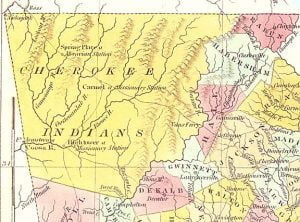Art of the Pamunkey Indians
In 1891 the writer was sent by the Smithsonian Institution to visit the Pamunkey Indians and make a collection of specimens of their arts. Few articles could be found which were distinctively Indian productions. Of their aboriginal arts none are now retained by them except that of making earthenware and “dug-out” canoes. Until recent years they engaged quite extensively in the making- of pottery which they sold to their white neighbors but since earthen ware has become so cheap they have abandoned its manufacture so that now only the oldest of the tribe retain the art and even these cannot … Read more


